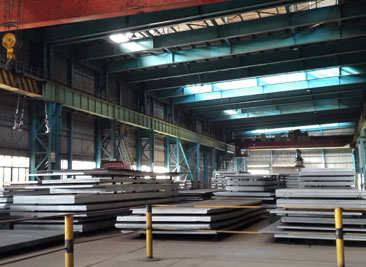 Contact us
Contact us
- : 0086-371-86151627 0086-371-86151827
- : 0086-371-86011881
- : [email protected]
- : [email protected]
- : bebonchina
 Products
Products- Boiler steels
- High carbon steel
- High Yield steel
- steel for welded tubes
- General construction steel
- steel with Cr.,Mo.,Cr-Mo
- Steel for large diameter pipes
- Simple pressure vessels steel
- Steel for gas cylinders and gas vessels
- General purpose structural steels
- Steel for boilers and pressure vessels
- steel resistant to atmospherical corrosion
- Carbon steel and low alloy steel
- Fine-grain structural steels,normalised rolled
- weldable normalized fine grained pressure vessel steels
WHAT IS Corten steel?
WHAT IS Corten steel?

Corten steel is becoming more popular by roll formed product end-users. Its unique look and naturally oxidizing finish make it especially desirable for many architectural projects. Weathering steel, best-known under the trademark Corten steel, is a group of steel alloys which were developed to obviate the need for painting, and form a stable rust-like appearance if exposed to the weather for several years. Weathering steel has increased resistance to atmospheric corrosion when compared to other steels. Corten resists the corrosive effects of rain, snow, ice, fog, and other meteorological conditions by forming a coating of dark brown oxidation over the metal, which inhibits deeper penetration and negates the need for painting and costly rust-prevention maintenance over the years. In simple terms the steel is allowed to rust and that rust forms a protective coating that slows the rate of future corrosion.
Corten steel is a high strength weathering steel. The word “CorTen” is the trademark name given to a weathering steel alloy material originally produced by United States Steel.
This steel alloy falls into the category of those that were developed to reduce or eliminate the use of coats, primers or paints on the material to make it rustproof. When exposed to the environment, this steel forms an outer layer platina that protects this steel from corrosion. This is the reason why this steel is called weathering steel.
In industrial specifications, weathering steel is commonly known by the name “Cor 10.” This steel is available in sheets, plates, coils, angles, channels, pipes and tubes, and is available in the applicable equivalent ASTM specifications of ASTM A588, A242, A606-4, A847 and A709-50W.
This steel is used for outdoor structures where the opportunities for inspection are minimal or not possible, such as tall building structures, bridges, marine structures, etc.
The disadvantage of this steel is that it requires special welding techniques, which are expensive and only available from a few experts in this field. This steel material is not recommended for humid sub-tropical climates, as it is prone to rust from within if any water pockets are formed in the metal.


